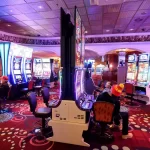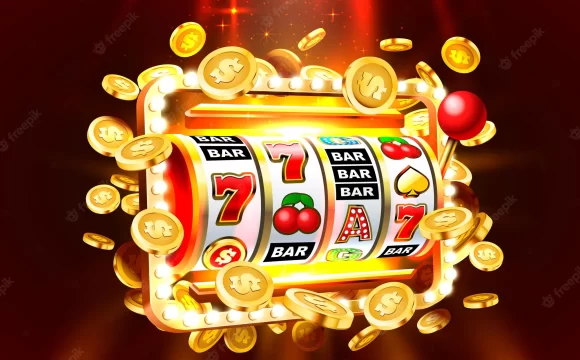The power of slot-machine graphics on gambling decisions is also taken into consideration: graphics can pull players into the immersive world or theme of the machine.
When you think about it, the creation of visual aesthetics and sound effects doesn’t just happen by chance; it’s more like a choreographed dance that taps psychology to shape player experience.
Colors and Shapes
Some elements on our slot machine are full of feelings: the colour and shape of all those symbols can convey energy and excitement, but they won’t convey lurking menace on its own. Other elements such as tones of purples, greys and reds suggest trust, relaxation; or squares, rectangles, circles, patterns can add to the emotion of slow, soft relaxation or increased pressure, tense energy.
The most powerful psychological conditioning in games is operant conditioning, where the technique of shaping trains a player to respond in a particular way by reinforcing the behaviour and making it go more frequently with each encounter: because of the anticipation, you keep on keeping on The fourth principle of ‘learned helplessness’ ties into the flow or control experienced in play directly. This how things work is how they always have been.
Slot machines use associative learning through extinction or the prolonged removal of behaviours that are no longer reinforced. For example, most slot machines pay out on near misses, or spins that are a little off from winning a jackpot, just to keep players interested and playing for longer. Seeded houses also use countless controlled randomisation procedures to alter the odds of winning so that players are happier and longer lasting with the gaming system.
Symbols
Symbols on slot machines aren’t mere decoration for players: they play a straightforward role in decisions On the modern machine, icons from the past have been all but forgotten – the cherries and lemons that decorated early one-armed bandits are still found on slot machines today, but they’re displayed nostalgically, like the image of a Barbie-style blonde gambling on older machines or the retro 1980s-style font often used for monetary symbols in modern slot games. This reflects how essential many players consider childhood memories to be in their gambling, which is one of the reasons that certain mythological figures are also prized by players – as a child, few of us are aware that biblical characters such as Daniel, David or Joshua were ever anything but helpless young men.
The artistic slot machine graphics – from its symbolic subplots to its emotion-inducing features; its creative team – are seeking to get better and better at it, ultimately becoming highly advanced narratives of the slots experience.
Near misses are also common and designed into slot machine play by slot designers to keep players pulling the lever longer and longer in hopes of making the eventual win appear bigger. Suspenseful sound also brought other emotions into play – the pulse quickened and excitement soared, leading the players to stretch to hit their target.
Themes
Slot themes go well beyond the skin-deep – they open up an avenue to emotions and experiences Slot themes are the building blocks of a vast and expansive vernacular that transforms mechanised play into something much more.
While the slot machine’s core concentrations might be the mechanical workings of the game, the interactive controls, and the mathematically calculated probabilities of hits, slots visuals go deeper than being merely aesthetically pleasing, offering the bricks of an emotional, narrative and textural machine experience: nostalgic fruit symbols, to changing scenery, mythological figures, and even whole icons that take the players on a journey through time.
Themes can be a big part of keeping people coming back. People who have ever played a slot with a particular theme before are much more likely to choose that machine over other ones because they have had success playing that theme before. This is why casinos are constantly coming out with new themes. Casinos want to be able to reflect shifting tastes in society so that they can keep bringing people new options while still having a good chance of retaining some familiarity and people coming back.
Animations
Yet animation in slot games also adds an element of fun, making the slots feel less like spinning lots of numbers and instead feeling something more akin to video games, where the players might feel like the action is happening to them, like in the screenshot above. Even when the animation is relatively simple, it can make special parts of the experience fun. Not only does it make the game better to play by giving something extra to watch, but it can create mini-games that either serve a bonus (like free spins or a cash prize).
Developing the right kind of sound effects is important in the slot design process: the type of sound used after a win can raise the mood of the player and can lead to a higher chance of another win, while suspense sounds can become a more temptation when the near miss keeps you playing and convince that the next spin will be your lucky payout.
Purposeful use of such familiar symbols and icons serves to trigger well-known neural pathways in a player’s brain (again, that’s a simplification), and by cueing these known associations, he or she stands a greater chance of remaining glued to the machine. A knowledge of this interface between design and psychology can empower a player to make better choices about a slot machine they might choose to gamble on – and, as such, become immune to the inevitable development of potentially harmful dysfunctional gambling behaviours.









